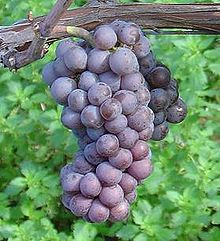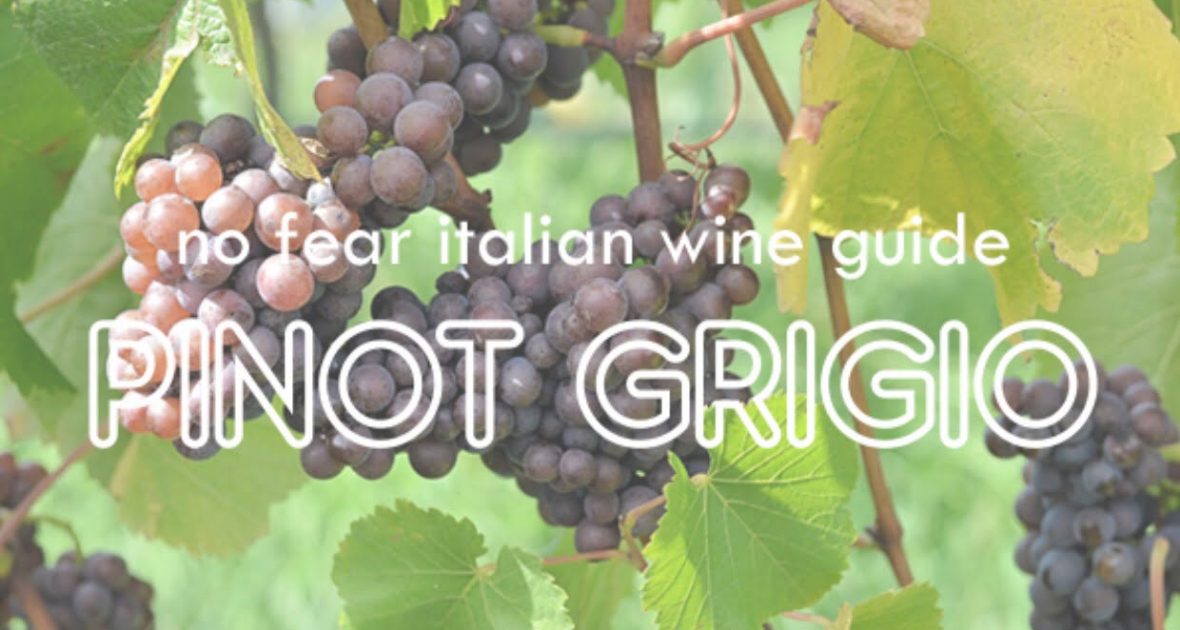What to Expect:
Think about your favorite sweatshirt—the crew sweatshirt you got as a college freshman, or the shapeless cardigan you picked up at the thrift store 15 years ago. It’s pitifully ratty with frayed edges, holes in a few weird places, a couple mysterious stains… but comfortable beyond belief. It’s not flashy or trendy, but it’s been with you through thick and thin. It’s familiar, dependable, and safe. This is Pinot Grigio.
Italian Pinot Grigio is a paradox: it’s the perfect “gateway wine” for beginning wine drinkers because the name is familiar and the smell and taste is fairly innocuous and inoffensive, but it’s also the secret favorite of quite a few aristocratic sommeliers and well-versed wine snobs. Why? It demands very little from you, just like an easy-going Pilsner or a vodka soda—which is exactly the kind of drink you want after a long day of waiting tables. The aromas are mild, and the taste is clean and crisp. There are notes of fresh citrus and crunchy green apples, but it’s never bold or audacious. But while this Plain Jane wine might seem insipid and bland, there’s actually more to it than that.

Here’s the most curious thing about this pale, thin, clear-as-water wine: Pinot Grigio grapes aren’t actually white! The term grigio is Italian for “gray,” which loosely describes the color of the grapes’ skins. (Fun fact: Pinot Grigio is exactly the same as Pinot Gris—it just depends on what each country chooses to call it!) This unique color comes from Pinot Grigio’s ancestral heritage: it’s actually a mutation of another well-beloved grape: Pinot Noir. The entire family of Pinot grapes originated in France, and Pinot, being highly mutatable, has a ridiculously large progeny. Pinot Gris traveled to Italy several hundred years ago, and has since become a cornerstone of wine production.
So how does the wine get so clear? This is a conscious decision made by the winemaker. The style that many wine drinking countries (especially the U.S.) have latched onto is that of a clear, light-bodied, minerally-crisp version, and so most Italian Pinot Grigio producers cater to this worldwide market of drinkers. The grapes are pressed to release the clear juice, and the skins are taken away immediately so there’s no chance of any color bleeding into the liquid. After a quick fermentation in stainless steel tanks to preserve the fresh fruit flavors and aromas, it’s bottled and sent out to stores and restaurants around the world for immediate consumption. Other regions, especially neighboring Slovenia, have a tradition of leaving the Pinot Grigio skins on the juice for a while in order to soak up color, flavor, and some tannins, resulting in a wine with a fuller body, more flavor, a firmer structure, and a beautiful deep-hued coppery-pink color. Check out Pullus Pinot Grigio for a good example.
Perfect Pairings:
Because Pinot Grigio is so mellow and flexible, there’s no end to what you could pair this versatile wine with. The flavors aren’t bold enough to fight against most strongly flavored foods, and the fresh acidity is a perfect foil dishes with a lot of cream, oil or fat. Lemon chicken piccata, fresh summer salads, tangy goat cheese, spaghetti carbonara… hungry yet?
Fail-Proof Pairing: Try some Recla Speck from Alto Adige (home of most Italian Pinot Grigio) with Marco Felluga “Mongris” Pinot Grigio. This cured ham has a slightly smoky flavor due to the light smoking process, and has a mild flavor which melds perfectly with the soft flavors of the Pinot Grigio.
The Classics:
Riff Pinot Grigio, $10.99
Marco Felluga “Mongris” Pinot Grigio, $19.99
Something Different:
Brunori “Le Gemme” Verdicchio, $14.99: Verdicchio could be called the Pinot Grigio of central Italy. (The vast majority of Pinot Grigio is grown in Italy’s Alto Adige, located in the northeastern part of the country.) It shares a lot of the same characteristics as Pinot Grigio, including its pale color, crisp citrus flavors, and medium-high acidity. This classic example from Brunori has pointed aromas of lemon peel and fresh hay, bright acidity, and a slightly bitter note on the finish.
Gagliardo Favorita, $18.99: Known as Vermentino in Sardinia, Favorita is an important white grape in Piedmont. It has beautiful orchard fruit notes, similar to Pinot Grigio but with perhaps greater intensity while still retaining lightness of body. This summer quencher by Gagliardo has a slight effervescence to it, making it even more refreshing in the middle of a hot day on the patio.
Perusini Sauvignon Blanc, $24.99: If you love the citrus component of Pinot Grigio but want to amp it up a little, check out Perusini Sauvignon Blanc. This lively Sauvignon Blanc isn’t quite as “in your face” as what you’ll find from New Zealand, and is more akin to how the French produce Sauvignon Blanc. Elderflower, gooseberry, and honeysuckle blossoms waft out of the glass, and the palate is round and ripe with a hint of salinity to lift the crisp finish.
